Abstract
Enteropathogenic bacteria was isolated from 131 of 447 (29.4%) neotropical Panamanian lizards belonging to 34 species of seven families. Overall, 147 strains of bacteria were isolated comprising 26 Salmonella and 10 Arizona serotypes. Gymnopthalmus speciosus had the highest infection rate, 12 of 13 individuals (92.3%), whereas Gonatodes fuscus exhibited the lowest, 1 of 18 (5.6%). The highest infection was detected in lizards whose behavioral patterns were secretive (42.0%) and terrestrial (42.6%), whereas the lowest infection was among the scansorial lizards (17.5%). Rates were highest during the dry season, from January through April. Many neotropical Panamanian lizards were multiply infected by Salmonella an Arizona strains representing representing a wide range of serotypes. Infected lizards were distributed in areas varying from remote rural and forested regions to urban developments, offering a potentially important reservoir of enteropathogenic bacteria known to cause infection in man and domestic animals.
Full text
PDF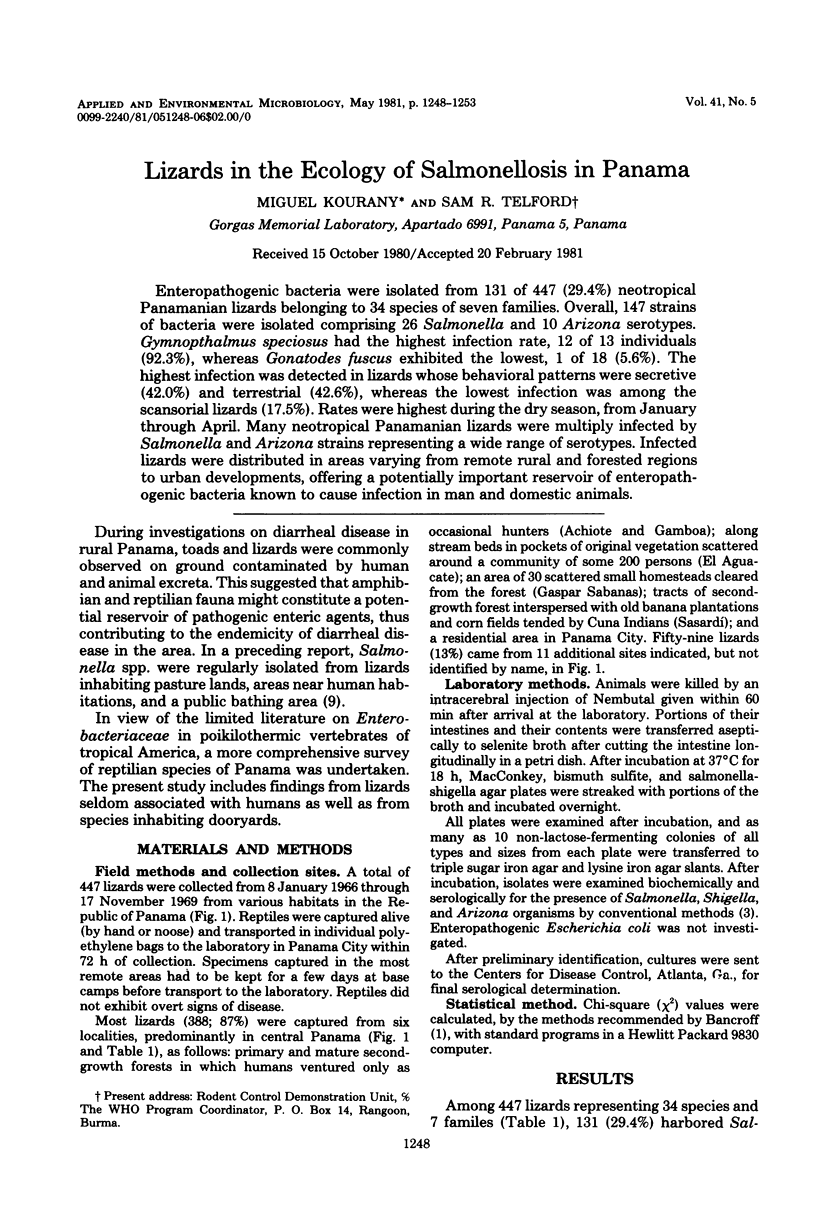
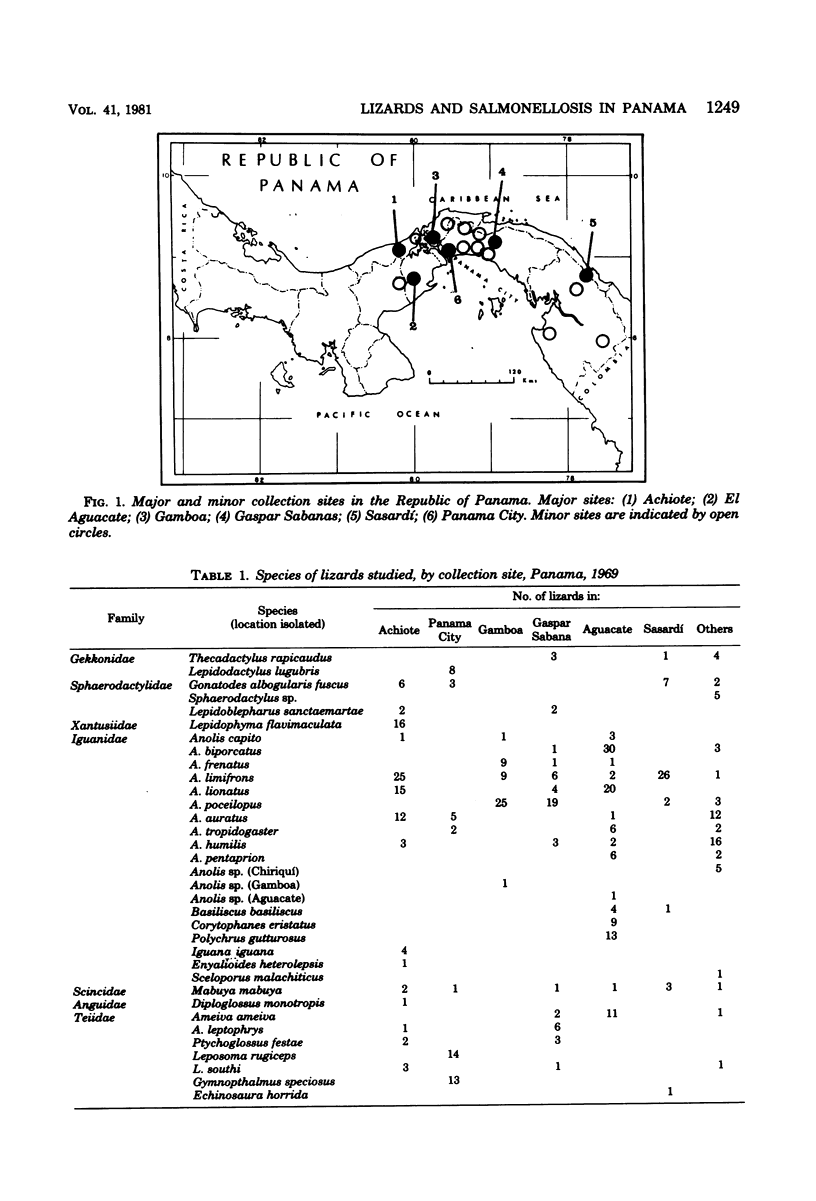
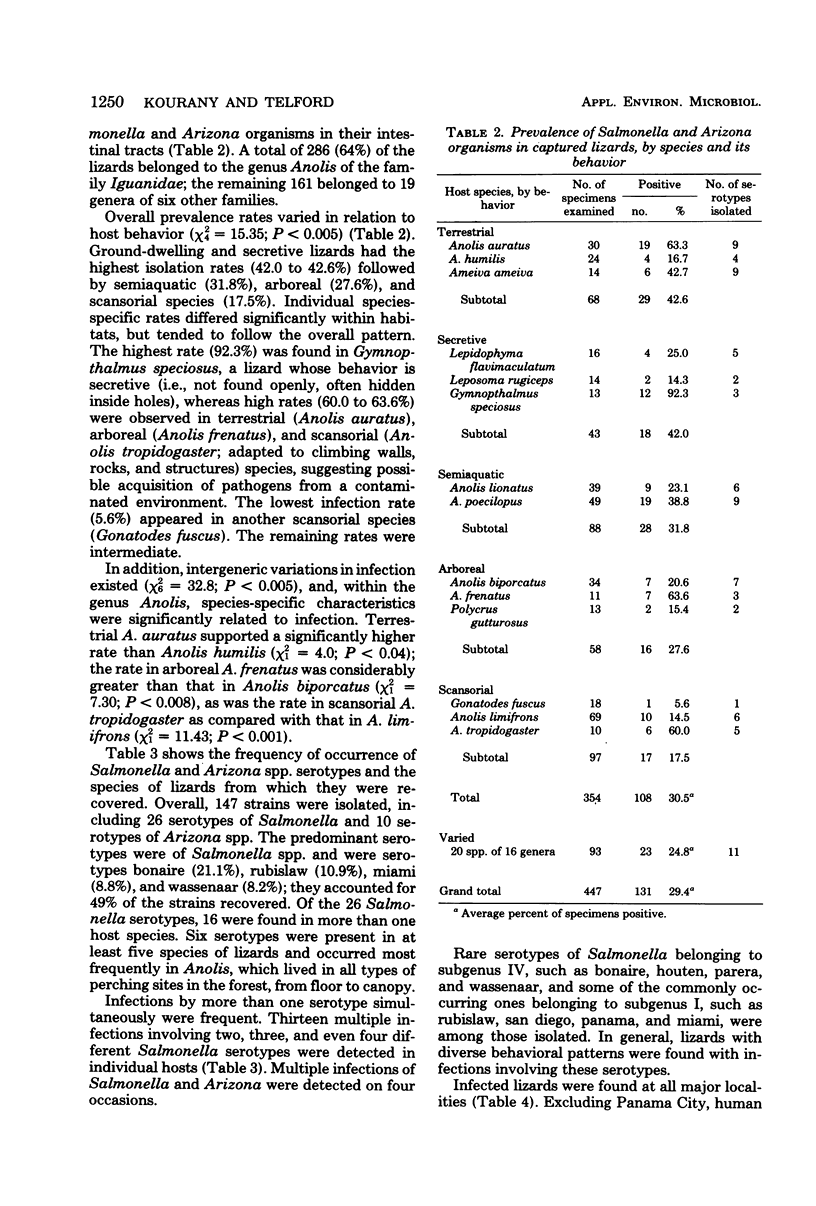
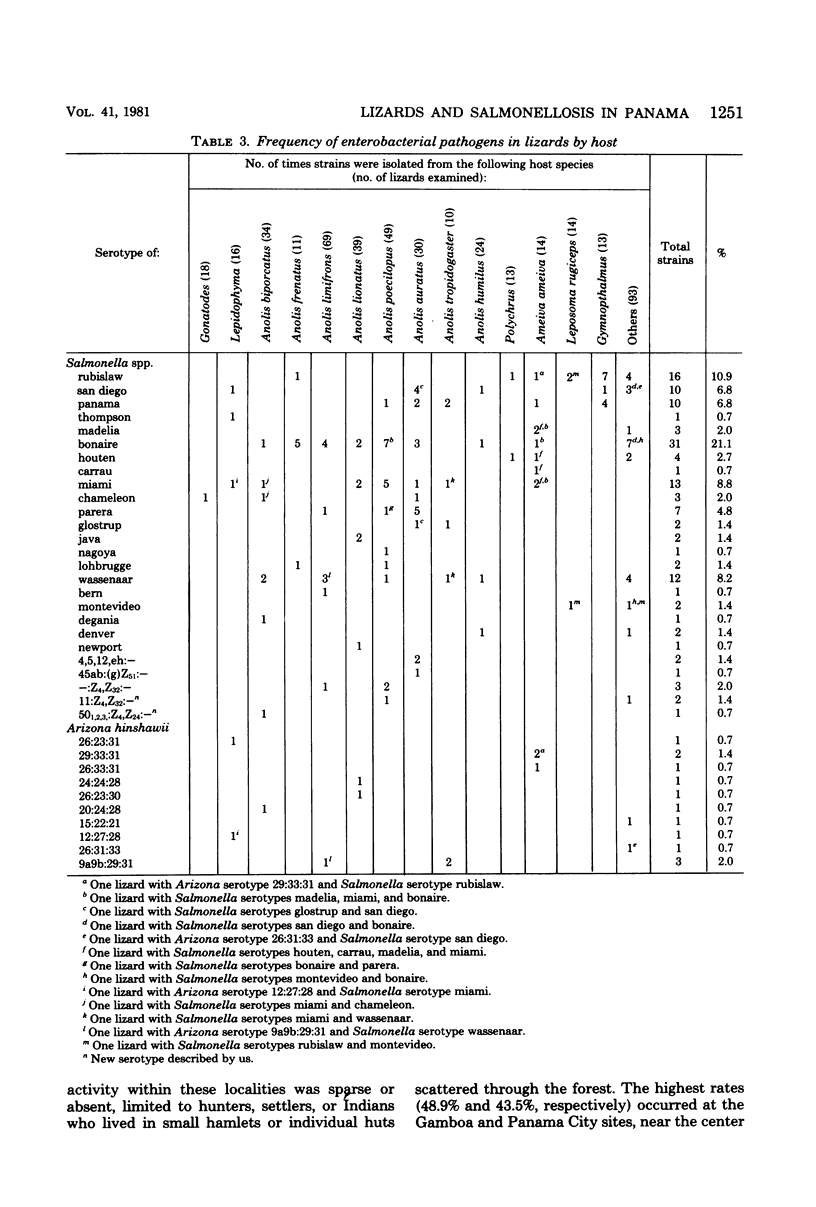
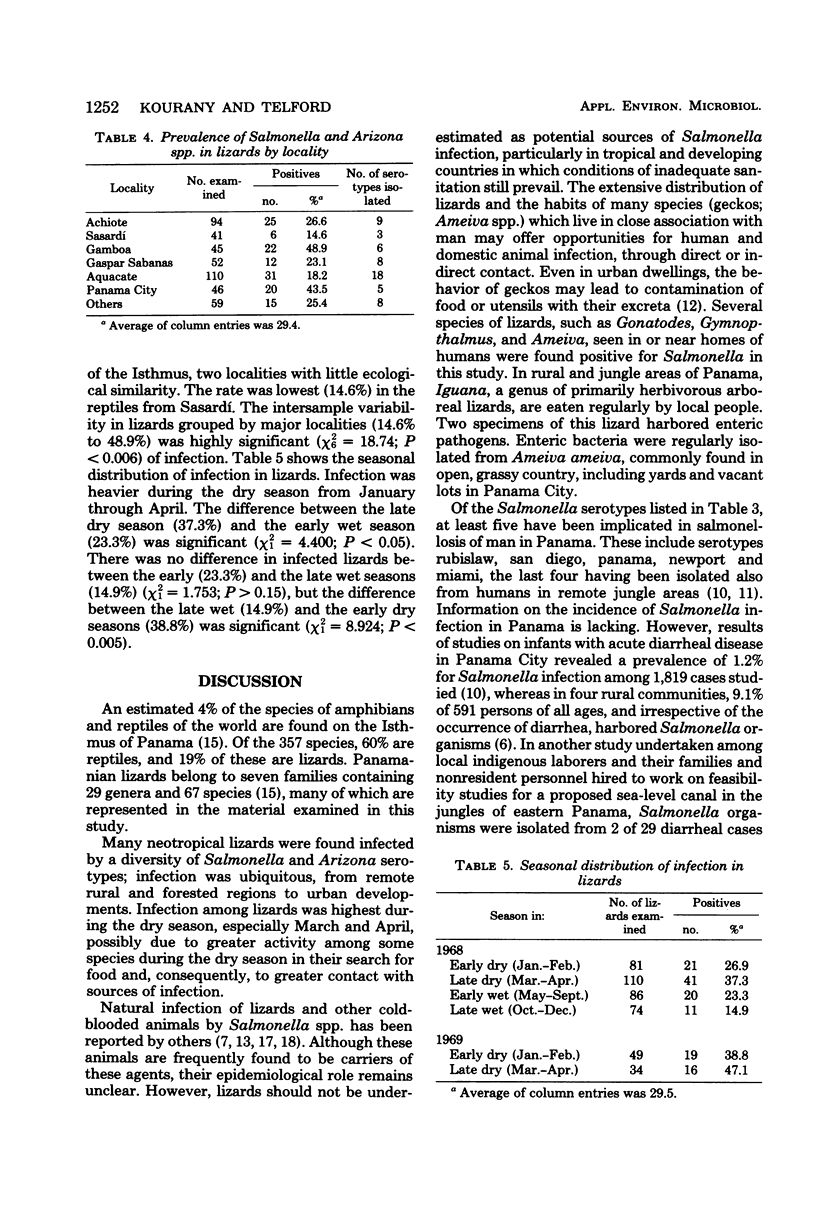
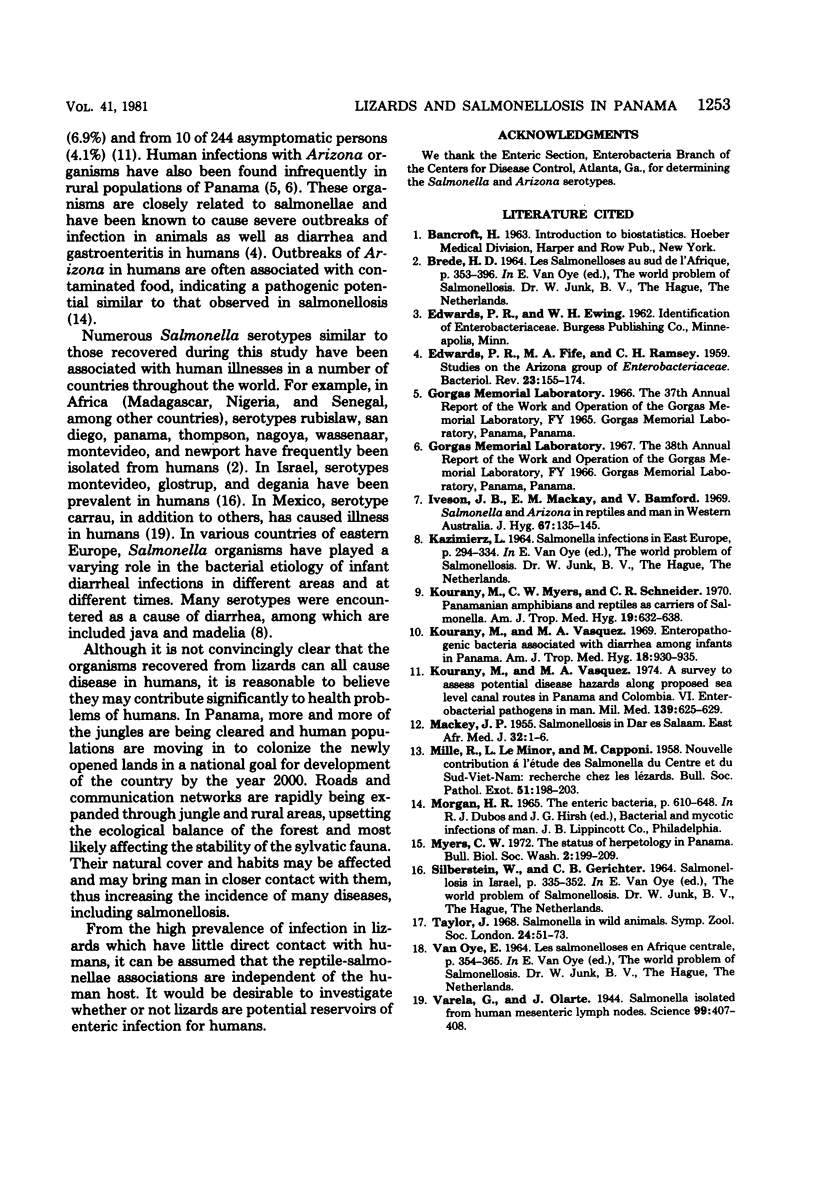
Selected References
These references are in PubMed. This may not be the complete list of references from this article.
- EDWARDS P. R., FIFE M. A., RAMSEY C. H. Studies on the Arizona group of Enterobacteriaceae. Bacteriol Rev. 1959 Dec;23(4):155–174. doi: 10.1128/br.23.4.155-174.1959. [DOI] [PMC free article] [PubMed] [Google Scholar]
- Iveson J. B., Mackay-Scollay E. M., Bamford V. Salmonella and Arizona in reptiles and man in Western Australia. J Hyg (Lond) 1969 Mar;67(1):135–145. doi: 10.1017/s0022172400041516. [DOI] [PMC free article] [PubMed] [Google Scholar]
- Kourany M., Myers C. W., Schneider C. R. Panamanian amphibians and reptiles as carriers of Salmonella. Am J Trop Med Hyg. 1970 Jul;19(4):632–638. doi: 10.4269/ajtmh.1970.19.632. [DOI] [PubMed] [Google Scholar]
- Kourany M., Vásquez M. A. Enteropathogenic bacteria associated with diarrhea among infants in Panama. Am J Trop Med Hyg. 1969 Nov;18(6):930–935. doi: 10.4269/ajtmh.1969.18.930. [DOI] [PubMed] [Google Scholar]
- MACKEY J. P. Salmonellosis in Dar es Salaam. East Afr Med J. 1955 Jan;32(1):1–6. [PubMed] [Google Scholar]
- MILLE R., LE MINOR L., CAPPONI M. Nouvelle contribution à l'étude des Salmonella du centre et du sud Viet-Nam; recherches chez les lézards. Bull Soc Pathol Exot Filiales. 1958 Mar-Apr;51(2):198–203. [PubMed] [Google Scholar]
- Varela G., Olarte J. SALMONELLA ISOLATED FROM HUMAN MESENTERIC LYMPH NODES. Science. 1944 May 19;99(2577):407–408. doi: 10.1126/science.99.2577.407. [DOI] [PubMed] [Google Scholar]


